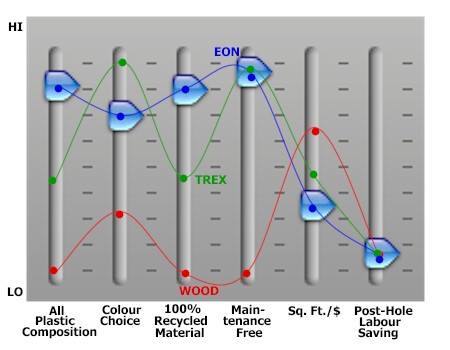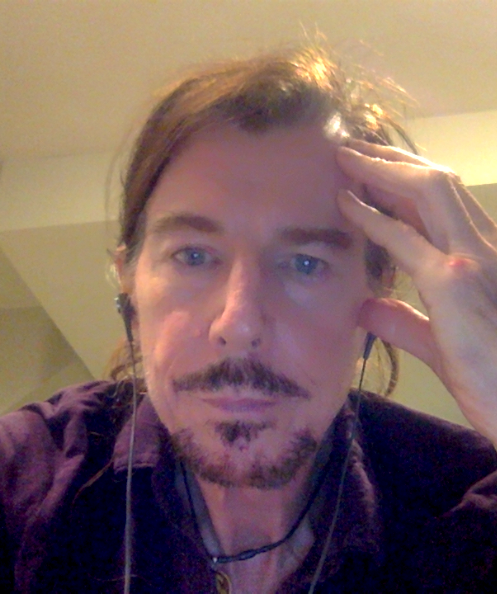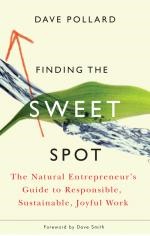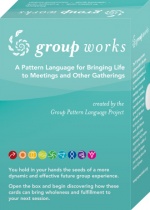 When I was responsible for developing new ‘knowledge products’ for a major professional services firm, we did it the old fashioned way. We identified all the content that was available and asked the practice leaders (the guys footing the bills) which content they wanted. We didn’t talk much with the front-line people or find out what jobs they did, or wanted to do, using knowledge. The practice leaders, ignorant of what was possible, told us, often, what they thought we wanted to hear. Then we went away and had fun designing sophisticated multi-functional Intranet websites and tools that would accommodate all this stuff, in the way that made sense to us as ‘information architects’. Then, we flooded their e-mails and newsletters with messages telling them what content was now available (messages few people read), and developed training courses and CBT to show them how to use the fancy tools we’d bought or built (training few people took). And we were surprised when most of our ‘users’ didn’t use or like the content or tools very much. Duh. A recent article in Business Week (thanks to Paul Graham for the link) describes the importance of getting your new technology product approximately right fast, and fine tuning it once it’s out in the market. Traditional product developers would be aghast at such an idea, since it sounds hasty and unprofessional. But today, with the appropriate caveats (“this is still in beta”) it makes sense (and not just for technology products) because rapid iteration is the best way to perfect a product, and because customers are essential to that process. As I’ve explained before, ‘finding a need and filling it’ entails finding the intersections of ‘jobs to be done’ and communities of people who do (or want to do) those ‘jobs’. This is illustrated in the need/affinity matrix above. This is not the way designers and marketers (“the customer doesn’t know what he wants”) usually think. Designers think in terms of features and benefits. Customers think in terms of the job to be done. They don’t want a 1/4″ drill bit (even if it plays iTunes music); they want a 1/4″ hole. It’s the jobs to be done that the entrepreneur should be looking for — jobs that existing products and services, for some reason, don’t satisfactorily do. (And a reminder: make sure you understand that reason — it can save you a lot of grief.) Likewise, marketers think in terms of demographics. But these days demographics is no longer a good way to parse your market: The days when a product could be made for a certain specific homogeneous age group, cultural group, or gender are long gone. Our affinities — the people or communities with whom we share a particular need or want — are now extremely complex, and getting more so. So you need to find the intersections of (unmet) needs and affinities. In the example in the matrix above, vendors have recently (in the last decade or so) discovered a need for decks and fences that require virtually no maintenance. People don’t have time to keep these structures looking beautiful. The solution the inventors came up with was moulded plastic (or wood/plastic composite) decking — no cracks because of thermal resilience and no painting because the colour is baked right in. The vendors discovered two main communities interested in such products — people with no time (or, if they were to be honest, lousy carpentry skills), and people worried about the newly-discovered health and environmental dangers of creosote and other wood preservatives. Once they’d found the intersections, the next step was to develop a strategy canvas (this is a Blue Ocean Strategy term, but I’ll use Kathy Sierra’s intriguing ‘equalizer‘ metaphor to demonstrate it) that would differentiate, in the eyes of the identified customer communities, their product from traditional wood decking and fencing materials: So what does this have to do with iteration and the wisdom of crowds? Well, as designers and marketers are quick to point out, the customer’s needs and wants are never that clearly articulated. They probably don’t know what they want or need (most of us are not very imaginative), especially if it’s something that hasn’t been invented yet. The vertical axis of the need/affinity matrix is therefore initially fuzzy. Iteration clarifies it. Show people something that meets what they think they need, and with enough iterations, they and you together will hone in on what they really need that you can produce. The inventors of plastic decking and fencing (back in the 1980s) didn’t do very well, because people couldn’t imagine using it. They couldn’t visualize it. The iterators like Eon and Trex who developed prototypes, installed a few free of charge so that customers and neighbours could see what they were getting, and kick the tires, and suggest improvements — those were the vendors who made money filling this need. Likewise, the horizontal axis of the need/affinity matrix is also initially fuzzy. With less time available each year, customers were clearly clamouring for lower-maintenance products. But those customers probably would be loath to admit that, compared to previous generations, they just don’t have the skills to build, repair or maintain such structures. And who would have guessed, if they hadn’t done a lot of research ‘in the crowd’, that consumer concerns about health, safety and the environment would lead to an aversion to, and then a ban on, creosote and other toxic wood preservatives, throwing the entire industry into chaos? And what about people in struggling nations who don’t have electricity? Snap-together decking does away with the need for power tools. Tapping the wisdom of crowds entails interviewing and surveying as many people as possible to get a consensus not only on the need, but on the categories of customer, the affinity groups, who have that need. Such primary research (which requires wearing out a lot of shoe-leather) would ask questions on issues such as:
This is hard work, but as long as you have the time and passion for it, it’s not expensive. It will give you a lot of information about the communities of customers who will buy your product, and, by iteration, exactly what they would prefer to buy. That puts you light years ahead of traditional companies, who invent in a lab, design in a vacuum, andthen advertise to anyone who will listen and hope for the best. |
Navigation
Collapsniks
Albert Bates (US)
Andrew Nikiforuk (CA)
Brutus (US)
Carolyn Baker (US)*
Catherine Ingram (US)
Chris Hedges (US)
Dahr Jamail (US)
Dean Spillane-Walker (US)*
Derrick Jensen (US)
Dougald & Paul (IE/SE)*
Erik Michaels (US)
Gail Tverberg (US)
Guy McPherson (US)
Honest Sorcerer
Janaia & Robin (US)*
Jem Bendell (UK)
Mari Werner
Michael Dowd (US)*
Nate Hagens (US)
Paul Heft (US)*
Post Carbon Inst. (US)
Resilience (US)
Richard Heinberg (US)
Robert Jensen (US)
Roy Scranton (US)
Sam Mitchell (US)
Tim Morgan (UK)
Tim Watkins (UK)
Umair Haque (UK)
William Rees (CA)
XrayMike (AU)
Radical Non-Duality
Tony Parsons
Jim Newman
Tim Cliss
Andreas Müller
Kenneth Madden
Emerson Lim
Nancy Neithercut
Rosemarijn Roes
Frank McCaughey
Clare Cherikoff
Ere Parek, Izzy Cloke, Zabi AmaniEssential Reading
Archive by Category
My Bio, Contact Info, Signature Posts
About the Author (2023)
My Circles
E-mail me
--- My Best 200 Posts, 2003-22 by category, from newest to oldest ---
Collapse Watch:
Hope — On the Balance of Probabilities
The Caste War for the Dregs
Recuperation, Accommodation, Resilience
How Do We Teach the Critical Skills
Collapse Not Apocalypse
Effective Activism
'Making Sense of the World' Reading List
Notes From the Rising Dark
What is Exponential Decay
Collapse: Slowly Then Suddenly
Slouching Towards Bethlehem
Making Sense of Who We Are
What Would Net-Zero Emissions Look Like?
Post Collapse with Michael Dowd (video)
Why Economic Collapse Will Precede Climate Collapse
Being Adaptable: A Reminder List
A Culture of Fear
What Will It Take?
A Future Without Us
Dean Walker Interview (video)
The Mushroom at the End of the World
What Would It Take To Live Sustainably?
The New Political Map (Poster)
Beyond Belief
Complexity and Collapse
Requiem for a Species
Civilization Disease
What a Desolated Earth Looks Like
If We Had a Better Story...
Giving Up on Environmentalism
The Hard Part is Finding People Who Care
Going Vegan
The Dark & Gathering Sameness of the World
The End of Philosophy
A Short History of Progress
The Boiling Frog
Our Culture / Ourselves:
A CoVid-19 Recap
What It Means to be Human
A Culture Built on Wrong Models
Understanding Conservatives
Our Unique Capacity for Hatred
Not Meant to Govern Each Other
The Humanist Trap
Credulous
Amazing What People Get Used To
My Reluctant Misanthropy
The Dawn of Everything
Species Shame
Why Misinformation Doesn't Work
The Lab-Leak Hypothesis
The Right to Die
CoVid-19: Go for Zero
Pollard's Laws
On Caste
The Process of Self-Organization
The Tragic Spread of Misinformation
A Better Way to Work
The Needs of the Moment
Ask Yourself This
What to Believe Now?
Rogue Primate
Conversation & Silence
The Language of Our Eyes
True Story
May I Ask a Question?
Cultural Acedia: When We Can No Longer Care
Useless Advice
Several Short Sentences About Learning
Why I Don't Want to Hear Your Story
A Harvest of Myths
The Qualities of a Great Story
The Trouble With Stories
A Model of Identity & Community
Not Ready to Do What's Needed
A Culture of Dependence
So What's Next
Ten Things to Do When You're Feeling Hopeless
No Use to the World Broken
Living in Another World
Does Language Restrict What We Can Think?
The Value of Conversation Manifesto Nobody Knows Anything
If I Only Had 37 Days
The Only Life We Know
A Long Way Down
No Noble Savages
Figments of Reality
Too Far Ahead
Learning From Nature
The Rogue Animal
How the World Really Works:
Making Sense of Scents
An Age of Wonder
The Truth About Ukraine
Navigating Complexity
The Supply Chain Problem
The Promise of Dialogue
Too Dumb to Take Care of Ourselves
Extinction Capitalism
Homeless
Republicans Slide Into Fascism
All the Things I Was Wrong About
Several Short Sentences About Sharks
How Change Happens
What's the Best Possible Outcome?
The Perpetual Growth Machine
We Make Zero
How Long We've Been Around (graphic)
If You Wanted to Sabotage the Elections
Collective Intelligence & Complexity
Ten Things I Wish I'd Learned Earlier
The Problem With Systems
Against Hope (Video)
The Admission of Necessary Ignorance
Several Short Sentences About Jellyfish
Loren Eiseley, in Verse
A Synopsis of 'Finding the Sweet Spot'
Learning from Indigenous Cultures
The Gift Economy
The Job of the Media
The Wal-Mart Dilemma
The Illusion of the Separate Self, and Free Will:
No Free Will, No Freedom
The Other Side of 'No Me'
This Body Takes Me For a Walk
The Only One Who Really Knew Me
No Free Will — Fightin' Words
The Paradox of the Self
A Radical Non-Duality FAQ
What We Think We Know
Bark Bark Bark Bark Bark Bark Bark
Healing From Ourselves
The Entanglement Hypothesis
Nothing Needs to Happen
Nothing to Say About This
What I Wanted to Believe
A Continuous Reassemblage of Meaning
No Choice But to Misbehave
What's Apparently Happening
A Different Kind of Animal
Happy Now?
This Creature
Did Early Humans Have Selves?
Nothing On Offer Here
Even Simpler and More Hopeless Than That
Glimpses
How Our Bodies Sense the World
Fragments
What Happens in Vagus
We Have No Choice
Never Comfortable in the Skin of Self
Letting Go of the Story of Me
All There Is, Is This
A Theory of No Mind
Creative Works:
Mindful Wanderings (Reflections) (Archive)
A Prayer to No One
Frogs' Hollow (Short Story)
We Do What We Do (Poem)
Negative Assertions (Poem)
Reminder (Short Story)
A Canadian Sorry (Satire)
Under No Illusions (Short Story)
The Ever-Stranger (Poem)
The Fortune Teller (Short Story)
Non-Duality Dude (Play)
Your Self: An Owner's Manual (Satire)
All the Things I Thought I Knew (Short Story)
On the Shoulders of Giants (Short Story)
Improv (Poem)
Calling the Cage Freedom (Short Story)
Rune (Poem)
Only This (Poem)
The Other Extinction (Short Story)
Invisible (Poem)
Disruption (Short Story)
A Thought-Less Experiment (Poem)
Speaking Grosbeak (Short Story)
The Only Way There (Short Story)
The Wild Man (Short Story)
Flywheel (Short Story)
The Opposite of Presence (Satire)
How to Make Love Last (Poem)
The Horses' Bodies (Poem)
Enough (Lament)
Distracted (Short Story)
Worse, Still (Poem)
Conjurer (Satire)
A Conversation (Short Story)
Farewell to Albion (Poem)
My Other Sites






I can appreciate the kind of reasoning that went into the solutions that created/satisfied your faux wood need/affinity example. Taken from a capitalist entrepreneurial point of view this example would look to be a huge success. But I think the name of your blog is “How to Save the World.” Given a world saving perspective, this “technical solution” example is anything but. It relies on the use of highly embedded fossil fuel costs. Unfortunately many so-called solutions involving real goods wherein one can “make money” entail the same profligate use of dwindling resources. I’ll grant you the thought process that went into this solution may be valid. I simply have trouble with this example as one to emulate.